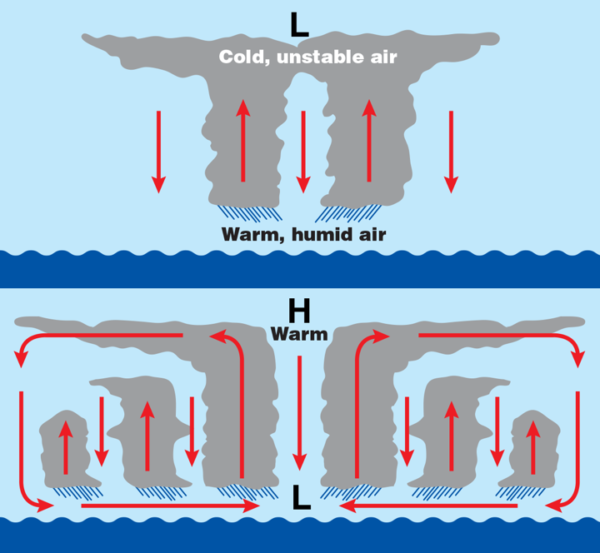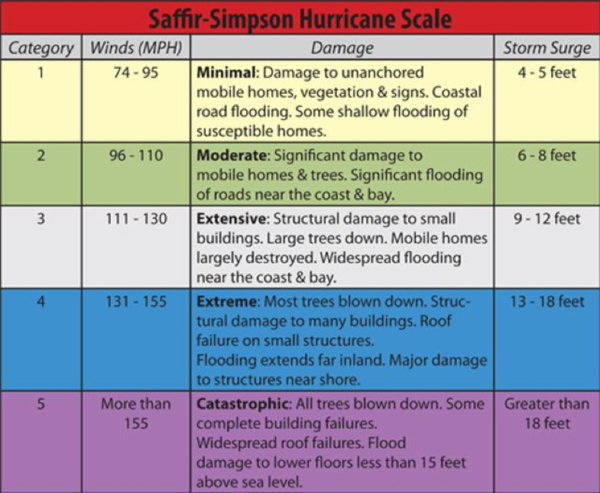What Are The Life Cycles Of A Tropical System?
There are many stages to a tropical system and it’s important to know the distinction between each one, especially as the peak of hurricane season is upon us. Meteorologists have come up with four different stages of a tropical system. They include tropical disturbance, tropical depression, tropical storm, and hurricane. All have their own criteria and will be briefly described below.
The first stage is the tropical disturbance stage. During this stage, water vapor from the warm oceans condenses to form clouds. The warmer the water, the more water vapor and more vertical motion there is for condensation to occur. As condensation occurs, heat is released into the air attributing to more upward motion. Convection will continue to form more clouds, and eventually a cluster of thunderstorms.
The second stage is the tropical depression stage. As the thunderstorms continue to grow, the air at the top of the cloud column starts to get colder. This creates more instability since the air parcels that are rising into the storm are warmer than their environment. Deep convection starts to occur at this stage. At some point, the storm will have one or two closed isobars (lines of equal pressure), indicating further intensification. Winds will be stronger and more sustained, but will not exceed 38 mph. The storm, at this point, is still cold-core, meaning that the center of the storm is colder than the rest of it.
The third stage is when the system transitions into a tropical storm. During this stage, one-minute sustained wind speeds of 39-73 mph are reached. The eye becomes even more pronounced and the circulation is more noticeable. On a weather map, there will be several closed isobars. This is also when latent heat (energy released to form condensation) that is released becomes the main driver for intensification. At this point, it becomes a warm-core system as the air in the center of the storm is warmer than the rest of it. The image below shows the difference between a tropical depression (cold core) and a tropical storm/hurricane (warm core). Tropical storms produce very heavy rainfall and are associated with damaging winds.
The final stage is when the storm transitions into a hurricane. This occurs when the sustained winds reach at least 74 mph. At this point, the eyewall starts to take shape as air in the center is descending to the surface. This subsidence makes it hard for clouds to form. The eye can vary from 2-30 miles in diameter, with stronger storms usually having smaller eyes. Hurricanes can cause a lot of destruction, not only with wind but also with storm surge and flooding, as well. The diagram below shows the different categories of a hurricane and what type of damage each one can produce.
To learn more about other tropical cyclone topics, be sure to click here!
©2019 Meteorologist Corey Clay
AlabamaWX is pleased to partner with the Global Weather and Climate Center team for outstanding posts about our atmosphere. Visit them at https://www.globalweatherclimatecenter.com for more great information!
Category: ALL POSTS, Partner News Stories

















